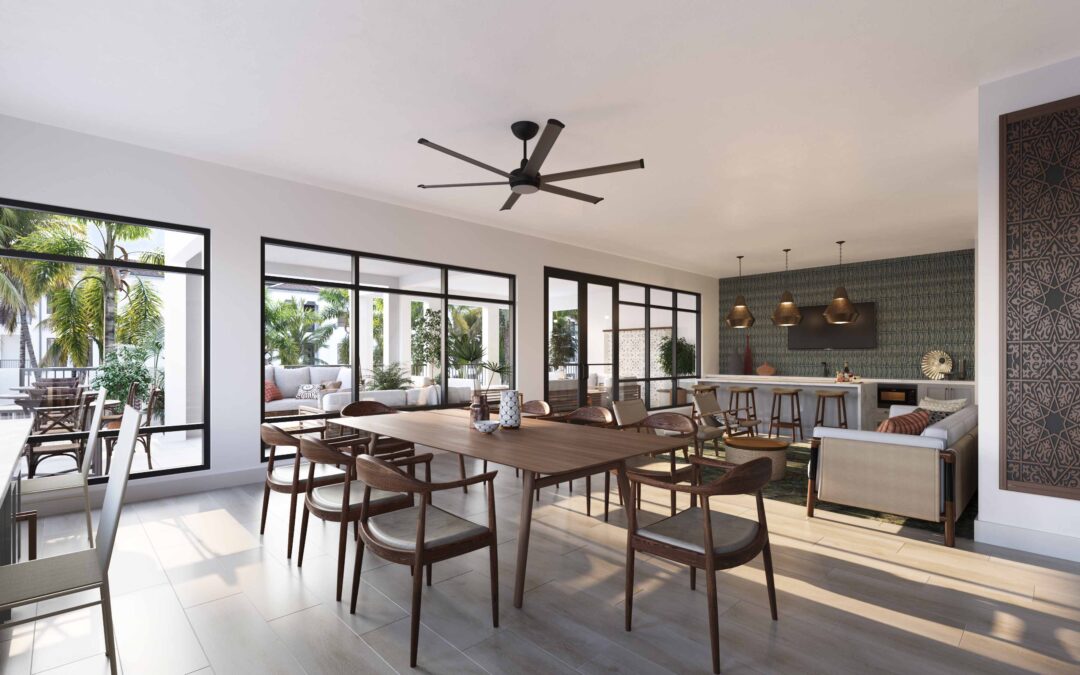
Virtual Tours for Commercial Real Estate
Showing a property remotely to a potential buyer or tenant is not new, but the delivery method is changing. Over the years there have been large advancements in technology for built spaces (Matterport falls under this category). However, technology has often lagged for unbuilt spaces, such as pre-construction sites, outdated buildings or raw spaces, with owners still relying on expensive model units or building out spec TI. Now both software and hardware (VR headsets, cellphone processing speeds) have improved, but uptake among real estate users varies greatly.
Since the start of Covid and the dramatic decrease in onsite tours, we have seen dramatic differences among owners and brokers’ utilization of technology. Some groups are waiting to lease-up until after their delayed construction processes pick up again, while we’ve seen other groups rapidly improve their whole online presence, from property websites featuring virtual walk-throughs, different tenant improvement build-out templates, and fly-through videos highlighting neighborhood and building key areas that might not be visible during Covid.
Many different groups have reached out: tech firms looking to sub-lease, brokers and owners looking to pre-lease/pre-sell, developers and funds looking to raise capital remotely, all with slightly different goals but most settling on similar tech solutions. One thing is clear from all the increased inquiries: commercial real estate is long overdue for a digital update and virtual tours have become part of the new normal.
Clients are now expecting to “see” proposed renovation plans more clearly than they could from blueprints. Some of the common visualization terms and concepts are:
360 Tours – Users can click hot spots on a map and look at 360-degree views from that spot. Similar to Google Maps but useful for large floorplans or entire neighborhoods. We had REOCs use this for planning commission meetings. Also had brokers request the product for pre-leasing, especially retail/office within mixed-use developments.
Flythrough Animations – Similar to 360 Tours, but the client drives the views and the story-telling. We saw it used for everything from pre-selling new condo and office projects to showcasing to LPs the proposed value-add plans. Given the halt of on-sites, some funds are also using these to give prospective investors “virtual tours” of assets in the portfolio.
Architectural Animation Example
Virtual Reality – This was popular at sales and leasing centers pre-pandemic, as well as at fund AGMs pre-COVID. Since COVID, headset usage has mostly been replaced by desktop versions where users would walk through a space with their keyboard and mouse.
Value-add Real Estate Technology:
-Potential tenants often have issues visualizing what a space can look like. Virtual content can be customized to a tenant type in mind whether it’s creative office or life science lab space. Even multiple virtual build-outs cost a fraction of one physical build-out.
-Content can be viewed on-site or remotely; content can also be used in targeted marketing.
-Instead of having tenants visit 20 properties in person; they can review them all from their brokers’ office or their own office, and then view the top 2-3 in person.
-One of the interesting aspects of virtual tours that is often overlooked by owners is the SEO and branding benefits. Per an Omnivirt Study, compared to 2D content, 360/virtual content receives 300% more click-throughs, as well as resonating better with tech-forward professionals.
-While branding/websites should not be considered proptech, it’s an important part of programming an asset that’s often overlooked for commercial properties. Modern websites set the tech-forward message that many developers are trying to convey.
